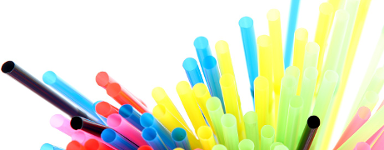CORPORATE ACTION
REVIEWED: CPG's New Plastics Economy Commitments
The Ellen MacArthur Foundation published a detailed set of promises and statements made by companies regarding their plastic use abatement targets.
The 215 page document follows from the October 2018 launch of the New Plastics Economy Global Commitment that set a circular economy vision for plastic and gave various plastic-use reduction targets for companies and countries. Some 350 organizations have now signed onto the NPE commitments.
In broad terms, the NPE commitments require signatories to
The New Plastics Economy Global Commitment Spring 2019 Report is mostly a statement by each company to say what specific targets they are committing to and what they intend to do to get there.
In the graphics below, we outline some of our findings from this and other sources on how the companies are gearing up to address the plastics issue, looking at how much plastic they are using (relative to dollar sales); how their recycled content commitments stack up; and our perception of their commitment, based on their statements and declared actions.
Of course, from this preliminary and incomplete data it’s not possible to build a comprehensive view, but it does help show which companies are proactive and aggressive and which are laggards.
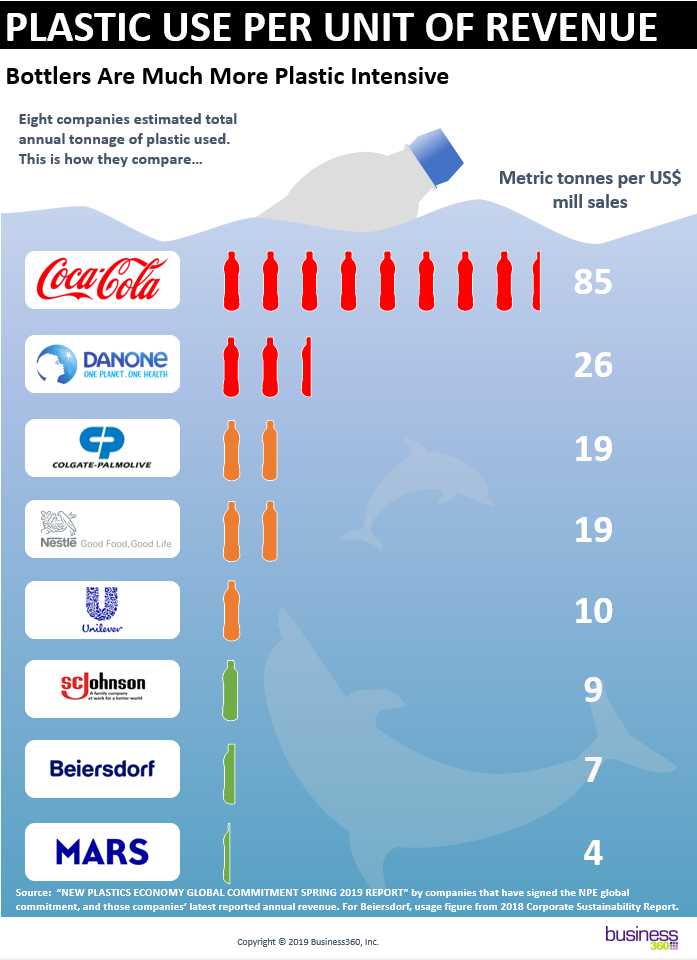
.png&width=720&height=922)
.png&width=722&height=948)
[Image Credit: © Business360]
The 215 page document follows from the October 2018 launch of the New Plastics Economy Global Commitment that set a circular economy vision for plastic and gave various plastic-use reduction targets for companies and countries. Some 350 organizations have now signed onto the NPE commitments.
In broad terms, the NPE commitments require signatories to
- Eliminate problematic or unnecessary plastic packaging and move from single-use to reuse packaging models
- Innovate to ensure 100% of plastic packaging can be easily and safely reused, recycled, or composted by 2025
- Circulate the plastic produced, by significantly increasing the amounts of plastics reused or recycled and made into new packaging or products
The New Plastics Economy Global Commitment Spring 2019 Report is mostly a statement by each company to say what specific targets they are committing to and what they intend to do to get there.
In the graphics below, we outline some of our findings from this and other sources on how the companies are gearing up to address the plastics issue, looking at how much plastic they are using (relative to dollar sales); how their recycled content commitments stack up; and our perception of their commitment, based on their statements and declared actions.
Of course, from this preliminary and incomplete data it’s not possible to build a comprehensive view, but it does help show which companies are proactive and aggressive and which are laggards.

.png&width=720&height=922)
.png&width=722&height=948)
[Image Credit: © Business360]
CORPORATE ACTION: Starbucks
Starbucks Proves ‘Closed Loop’ Potential Of Its Coffee Cups. Then Silence
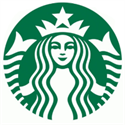 Following an eight-week trial in 2018, Starbucks and its partners demonstrated that it’s possible to recycle its paper coffee cups. A significant complication has been the waterproofing polyethylene liner inside the cup that must be removed during the recycling process before the fiber can be recovered.
Following an eight-week trial in 2018, Starbucks and its partners demonstrated that it’s possible to recycle its paper coffee cups. A significant complication has been the waterproofing polyethylene liner inside the cup that must be removed during the recycling process before the fiber can be recovered.To prove the process, Starbucks provided 25 million cups from excess inventory for Sustana to recycle at its De Pere, WI facility. After pulping, the polyethylene liners separated from the cup, allowing fibers to be screened off, cleaned and made ready for new cups.
Grand as it sounds, the story is not new. Moreover, it may well be superseded by other developments. In 2018, Starbucks worked with recycled-fiber provider Sustana, papermaker WestRock, and package supplier Seda North America to run the pilot. In September 2018, Sustana released a video detailing the project’s success, Cup to Cup: Close the Loop.
The story has been getting press again recently. Packaging World, for example, rehashed it February 18, 2019.
But the bigger story is that since Sustana released its video, little has happened.
The constraint for this process is effective collection. A WestRock study shows that 60% of food packaging goes home with the consumer, massively complicating collection. Further, collection practices vary from location to location, hindering the development of a common solution. Both these issues were well-known before the Starbucks pilot.
Without action on these fronts, paper cup recycling will remain very limited and the Starbucks effort looks little more than a PR win.
Most likely, innovators will develop a fully compostable paper that does not require such specialized processing or rely on harmonized collection practices. One leader in this field is the NextGen Cup Consortium, of which Starbucks is a founding partner.
The NextGen Cup Challenge is seeking the next generation fiber cup that will be recoverable on a global scale and meet current performance standards. It recently listed its current top 12 winners that will receive limited funding before up to six are progressed into its accelerator program.[Image Credit: © Starbucks]
CORPORATE ACTION: Walmart
Walmart Announces Plastic Packaging Waste Reduction Commitments
More broadly the company said it will work with suppliers to eliminate PVC in general merchandise packaging by 2020. Walmart says it encourages national brand suppliers to make similar packaging commitments and introduced a new recycling playbook to provide information to companies pursuing recyclable packaging and recycled content goals.
The company is a signatory to the G7 Oceans Plastics Charter and the New Plastics Economy Global Commitment being led by the Ellen MacArthur Foundation, in collaboration with the UN Environment.[Image Credit: © Walmart]
CORPORATE ACTION: Other
SC Johnson Partners Plastic Bank To Launch Windex Cleaner In Ocean Plastic Bottles
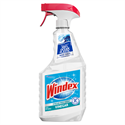 In April, SC Johnson’s Windex brand will release a Vinegar Multi-Surface Cleaner in a 100% recycled ocean plastic bottle. The company says it is a first for a major home cleaning brand. Windex bottles have been 100% post-consumer recycled plastic since 2015 and the shift to ocean plastic is assisted with a partnership with Plastic Bank that will source some of the plastic from its operations in Haiti, the Philippines and Indonesia.
In April, SC Johnson’s Windex brand will release a Vinegar Multi-Surface Cleaner in a 100% recycled ocean plastic bottle. The company says it is a first for a major home cleaning brand. Windex bottles have been 100% post-consumer recycled plastic since 2015 and the shift to ocean plastic is assisted with a partnership with Plastic Bank that will source some of the plastic from its operations in Haiti, the Philippines and Indonesia. Plastic Bank is a for-profit social enterprise that aims to reduce the amount of plastic waste in the environment while also helping to alleviate poverty in developing countries. It created a system for plastic exchange that uses app-based blockchain verification and enables its plastic collectors “to open a functioning digital bank account—sometimes, the first they’ve ever had”.
In the spring, around 8 million units of the Windex Vinegar Ocean Plastic bottles will be available in major North American retailers including Target and Walmart.
[Image Credit: © SC Johnson]
Estée Lauder Companies Announces 2025 Packaging Goals
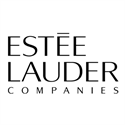
The Estée Lauder Companies (ELC) outlined a range of Environmental, Social and Governance goals that also include packaging. It says that by 2025, 75-100% of its packaging will be recyclable, refillable, reusable, recycled or recoverable, and adds that it will increase the amount of post-consumer recycled material in its product packaging by up to 50%.
ELC also said each of its brands would focus on and support at least one social or environmental cause by 2025. It did not indicate if any brand would concentrate on plastics. [Image Credit: © The Estée Lauder Companies]
POLICY, REGULATION & LEGAL
California Weighs Phasing Out Non-Recyclable Plastic
.png&width=125&height=83) California is looking at new legislation that would require plastic and other single-use materials sold in California to be either reusable, fully recyclable or compostable by 2030.
California is looking at new legislation that would require plastic and other single-use materials sold in California to be either reusable, fully recyclable or compostable by 2030.The legislation would also require the state to divert from landfills or recycle 75% of single-use plastic packaging and products sold or distributed in California. Currently, about 44% of all solid waste in California is diverted from landfills and less than 15% of single-use plastic in California is recycled. Moreover, given the collapse of foreign recycling markets due mainly to China’s withdrawal, California is also considering a bill that would establish requirements to create a domestic market for recyclables.
Businesses and some politicians object to the proposals, pointing to research that shows that it is large plastic items not small ones - straws and plastic forks – that are causing the Great Pacific Garbage Patch to grow. A 2018 study by the Netherlands-based Ocean Cleanup Foundation found 92% of the GPGP mass is represented by larger objects; while only 8% of the mass is contained in microplastics, defined as pieces smaller than 5 mm in size.[Image Credit: © Wiki Commons]
INNOVATION & TECHNOLOGY
NextGen Cup Challenge Announces 12 Winners Of Competition To Create Recyclable/Compostable Cup
The NextGen Consortium worked through nearly 500 submissions from over 50 countries. Up to six of the 12 winners will enter the NextGen Circular Business Accelerator, where the commercial viability of the innovation will be tested.
In a press release, The NextGen Consortium gives the 12 winners as:
Category One: Innovative Cup Liners (rethinking the polyethylene plastic liners in cups that make to-go cups difficult to recycle)
- C.E.E.R. SCHISLER, France, creates a 100% paper cup that is home compostable and recyclable
- Colombier Group, Netherlands, Finland, creates a recyclable and compostable barrier for paperboard cups
- Footprint US, USA, creates cups, lids and straws that are fully formed fiber-based solutions, with an aqueous-based coating that is recyclable and compostable
- Kotkamills Oy, Finland, creates plastic-free, recyclable and compostable cupstock material that can be processed into cups at existing cup making machines
- PTT MCC Biochem Company Limited, Thailand, creates a coated paper cup that is recyclable and home compostable
- Solenis LLC, USA, Belgium, creates a barrier coating that is recyclable and compostable
- Sun Chemical Corporation, USA, creates inks and coatings that are recyclable and compostable
- WestRock Corporation, USA, creates a recyclable and compostable paperboard solution to cups
- Solublue Ltd., UK, creates plant-based, food grade and non-toxic products that biodegrade after use
- CupClub, UK, operates a returnable cup ecosystem, providing a service for drinks. Think bike sharing, but for cups
- reCup GmbH, Germany, operates a deposit system for reusable cups. Rent their cup and return it to any participating partner shop. No cleaning of the cup or carrying around required
- Revolv, Indonesia, Hong Kong (China), operates a deposit-based platform for smart, reusable beverage packaging, connecting their cups--and third party products--to Internet of Things technologies
FFP Launches First UK Resealable Pack That Can Be Fully Recycled
 FPP launched a Reseal & Recycle pack that has been classified as 'Widely Recycled' by On-Pack Recycling Label Ltd (OPRL).
FPP launched a Reseal & Recycle pack that has been classified as 'Widely Recycled' by On-Pack Recycling Label Ltd (OPRL).The packaging is made of three components, the tray, lid and label, which are made from polyester and are designed not to be separated since the entire pack can be recycled via existing waste streams.
FFP says the packaging is suitable for a range of food and snack uses, including fresh fruit, cheese, confectionery, snacks, on-the-go, nuts, dried fruit and bakery. [Image Credit: © FPP]
Copyright 2026 Business360, Inc.

